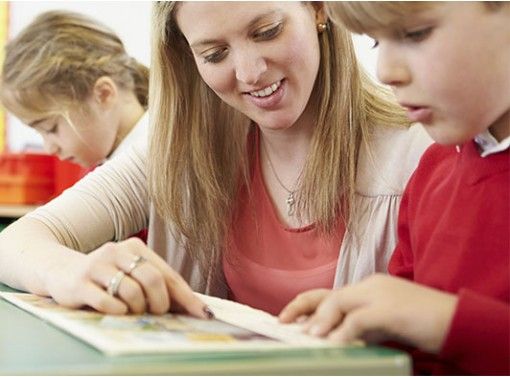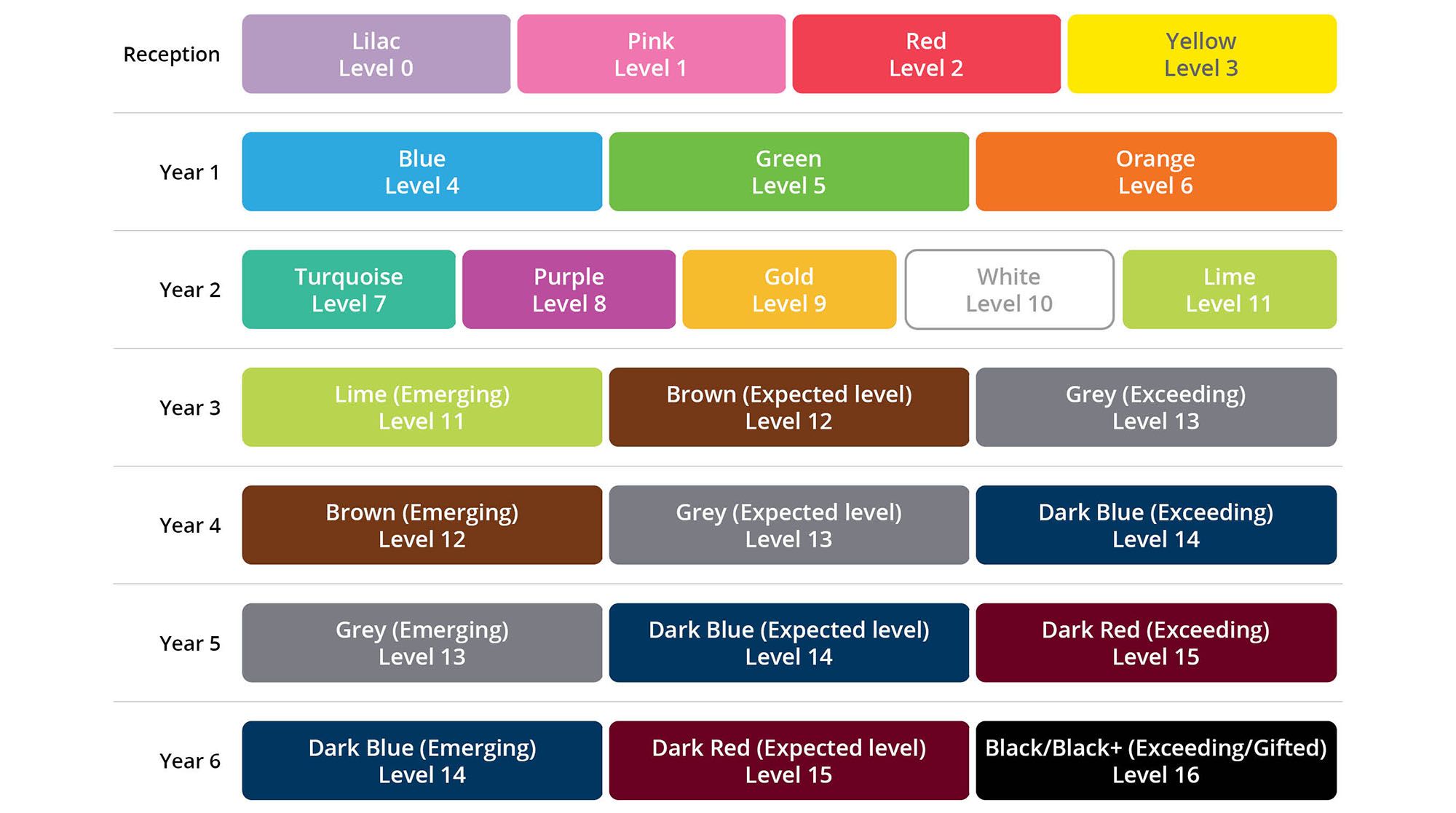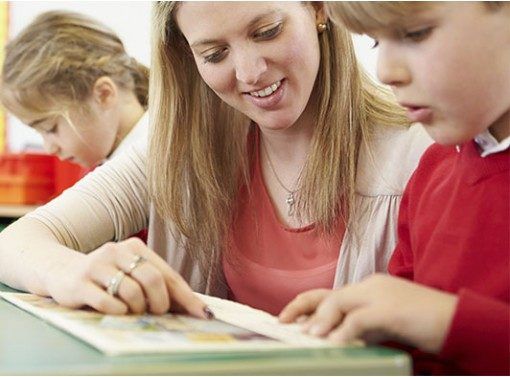Reading Schemes — Evaluating what’s right for your school

Choosing a new reading scheme is a big investment for any school, both in terms of financial commitment and the importance of getting a scheme that supports your pupils best on their journey to literacy. All educational publishers will have carefully written schemes, drawing on research and the expertise of literacy consultants, however, you will want to ensure that you choose the right scheme for your school community taking into account factors such as what existing resources you have, what system you are using for monitoring progression and at what stage children are moving on to free reading. Updated guidance from the Department of Education on phonics is covered in The Reading Framework (published July 2021) and will be important to review when updating your resources.
Jump to:
- What is a Reading Scheme?
- Which Reading Scheme is best for my school?
- Are Phonic books banded?
- Which schemes are fully decodable?
- What is the best scheme for teaching phonics?
- Can you mix up reading schemes?
- How do Book Bands work?
- Which reading schemes have lilac book band?
- Which reading schemes extend to Year 6 or have KS2 book bands?
- Are there any schemes that appeal particularly to boys?
- Which phonics schemes are suitable for children at risk of reading failure?
What is a Reading Scheme?
A Reading Scheme is a series of precisely levelled and skilfully written books that supports reading development. Key educational publishers such as Collins, Oxford and Pearson offer a range of reading schemes from professional literacy experts, authors and editors. Books progress in difficulty as children master the skills needed to read, and progression is usually measured either by book band colours or phases (phonic based schemes).
Which Reading Scheme is best for my school?
Choosing a reading scheme is a process that is unique to every school and each will have its own reasons for purchasing a particular scheme. In many schools the books used might even differ between year groups. For example, Reception and Year 1 classes may be using a rigorous systematic synthetic phonics (SSP) reading scheme to match their learning across the phases outlined in their teaching sequence. Conversely, Year 2 might follow book bands and a scheme with a variety of genres to practice their phonics, build confidence and enrich comprehension. The Reading Framework (July 2021) requires schools to have a rigorous and effective teaching programme in place for systematic synthetic phonics and this process should be complete in spring 2022. You can view the list of validated SSP programmes here.
The point at which children move onto ‘free’ reading will also be a consideration and may depend to an extent on the quality and depth of texts in the school library so that reading for pleasure can be promoted and sustained. A key part of the new framework states, “Teachers cannot improve reading skills without also taking account of, for example, ‘access to interesting and meaningful reading materials”. Schools will also want to include a range of catch-up books for children who need to recap the basics but at an interest level that still engages them.
| Rigorous systematic synthetic phonics teaching Schemes (validated SSP programmes) | Phonics Schemes with fully decodable texts(not currently part of an SSP teaching programme) | Emphasis on practice, comprehension (Book Bands) |
| Big Cat for Little Wandle Letters and Sounds Revised SSP (Collins) Bug Club Phonics (Pearson) Essential Letters and Sounds Floppy’s Phonics Teaching Programme (OUP) GES Simply Letters & Sounds Jolly Phonics Readers Junior Learning Letters & Sounds Lesley Clarke's Letters & Sounds Letterland McKie Mastery Power Phonics Monster Phonics No Nonsense Phonics Phonics International Phonics Shed Read Write Inc Phonics (OUP) Rocket Phonics SSP (Rising Stars’ Reading Planet) Schofield & Sims My Letters & Sounds Smart Kids Letters & Sounds — The Code Song of Sounds Sound Discovery Sounds Together Sounds-Write Success for All Phonics Supersonic Phonic Friends THE Partnership Phonics Programme Twinkl Phonics Unlocking Letters and Sounds Wand Phonics with Phonics International | Big Cat Phonics for Letters and Sounds (Collins) Big Cat Phonics for Letters and Sounds 7+ (Collins Intervention) Dandelion Readers Decode & Develop with Biff, Chip and Kipper (OUP) Explore with Biff, Chip and Kipper (OUP) Floppy’s Phonics Fiction (OUP) Little Blending (OUP) Project X Alien Adventures Project X Phonics (OUP) – small scheme Project X Hero Academy (OUP) Project X CODE (OUP Intervention) Ransom Reading Stars Phonics: Phases 1–5 Red Squirrel Phonics Moon Dog, Magic Belt, Island Adventure and Totem (PhonicBooks Intervention) Songbirds (OUP) Traditional Tales (OUP) Word Sparks (OUP) | Big Cat (Collins) Bug Club Independent (Pearson) Engage Literacy (Raintree) Maverick Readers (Pink-White) Oxford Reading Tree — Biff, Chip and Kipper (OUP) Oxford’s — Story Sparks, All Stars, inFact, Fireflies and Glow-Worms Project X Origins (OUP) Rigby Star Family — Guided / Independent Rising Stars’ Reading Planet: Comet Street Rising Stars’ Reading Planet: Galaxy |
Are Phonic books banded?
The new DfE Guidance specifies that schools need to be following a teaching programme based on an SSP programme by Spring 2022. These have books that follow the teaching sequence exactly so children are not expected to read unfamiliar sounds. Banded books should ideally then be used once children have either completed their phonic learning or as additional practice for reading depth and comprehension when reading with an adult. Ideally phonics books will follow the same progression as the teaching sequence (which may or may not be based on Letters and Sounds) and historically a book bands approach and phonics approach have not been compatible per se. Some publishers have been using a best-fit approach to match the phases of Letters and Sounds and book bands as this makes it easier for schools who are using the book bands system, but for a rigorous approach, you may want to choose a scheme that follows phases.
Which schemes are fully decodable?
| Rigorous Phonics Teaching Schemes | Phonics Schemes and Decodable Texts |
| Floppy’s Phonics Teaching Programme (OUP) Word Sparks (OUP) Project X Phonics (OUP) – small scheme Ransom Reading Stars Phonics Dandelion Readers Read Write Inc Phonics (OUP) Jolly Phonics Readers | Bug Club Phonics (Pearson) Rocket Phonics (Rising Stars’ Reading Planet) Big Cat Letters and Sounds (Collins) Songbirds (OUP) Explore with Biff, Chip and Kipper (OUP) Decode & Develop with Biff, Chip and Kipper (OUP) Project X Hero Academy (OUP) Project X Code (OUP) – intervention scheme Floppy’s Phonics Fiction (OUP) Traditional Tales (OUP) Ransom Reading Stars: Levels 1–4 Maverick Reading Scheme (early levels) |
What is the best scheme for teaching phonics?
While this can be considered a subjective choice for schools, the Department of Education is in the process of validating phonics teaching programmes with a team of experts. The new reading framework has more information on this, but you can consult the list of validated SSP programmes here. While schools do not have to choose a validated teaching programme you will want to ensure you are following the current guidance when making your choices. Your local English Hub should also be able to support you and some funding is available for schools that meet the criteria outlined in the reading framework, who need to invest in new books and teaching programmes for the teaching of phonics. See here for more information on funding.
The new framework requires schools to have an SSP teaching programme in place with books that are aligned to the programme and that “Children practise reading only with books that are decodable for them at that stage of their learning.” The Ofsted Reading Deep Dive states: “Inspectors will consider whether a rigorous approach to the teaching of reading develops learners’ confidence and enjoyment in reading. At the early stages of learning to read, reading materials are closely matched to learners’ phonics knowledge.”
For more information on the DfE changes please take a look at our blog DfE Changes to Systematic Synthetic Phonics.
Do also take a look at our article Preparing for the Ofsted Reading Deep Dive for more information on which sounds are included in which phonic books and how to ensure your school resources and planning are as up to date as possible.
Can you mix up reading schemes?
Once children have completed the phonic phases, many schools buy into several different reading schemes to give breadth and choice to the children — particularly for the home/school (book bag book) reading programme. Many choose to have one favoured scheme for Early Years/KS1 Guided Reading. It is possible also to use a reading scheme from one publisher and bolt on to this, for example, by using Oxford levels and selecting across the many new series, all of which are linked by the common progression system that is unique to Oxford Reading Tree and TreeTops. To mix and match publishers such as Pearson and OUP, the common progression levels are what is known as book bands. Book bands were deliberately established to enable schools to offer a range of different reading scheme books based on the criteria outlined in the publication Book Bands for Guided Reading (Bickler et al, Institute of Education). Mixed Reading Scheme collections are available here.
How do Book Bands work?
Book bands derive from levels initially presented by the UK Reading Recovery National Network but publishers have extended these levels to provide schools with a structure across the entire reading journey. Starting with wordless books at Lilac level, colours progress through 17 stages from Reception to Year 6. Some schools stop at Lime and pupils choose ‘real’ books from this point on. Others continue with a reading scheme book and a library book of free choice. If the ‘real’ books are also banded then this helps to guide book choices for pupils who are ‘free readers’ i.e. not continuing with a reading scheme after a given point.
Typically progression looks like this*:

*all readers will progress at different speeds and may have spurts at varying times
Which reading schemes have lilac book band?
Lilac books can be found in Pearson's Bug Club, Collins' Big Cat, Big Cat Phonics for Letters and Sounds, Rising Stars’ Reading Planet Lift-off and Oxford’s; Explore with Biff, Chip and Kipper, Story Sparks, Traditional Tales, inFact, Decode & Develop, Project X: Hero Academy, Word Sparks and Floppy’s Phonics. Pandora Books also offer mixed scheme boxes and Oxford mixed scheme boxes with a lilac level and non-fiction box for Lilac.
Which reading schemes extend to Year 6 or have KS2 book bands?
KS2 book bands most frequently use the colours: Brown, Grey, Dark Blue, Dark Red and Dark Red Plus (sometimes referred to as Black) , but other systems are out there including the popular Big Cat series that uses Copper, Topaz, Emerald, Ruby, Sapphire, Diamond and Pearl (which can be matched best-fit to the popular book band colours.
Oxford offers the TreeTops series — namely Project X Origins, TreeTops inFact (Non-Fiction), Reflect, Greatest Stories, Chucklers, Myths & Legends and Graphic Novels. Pandora’s Mixed Oxford Boxes include a range of these series at Levels Brown to Dark Red+.
Raintree's Engage Literacy for KS2– book band colours up to Dark Red.
Collins' Big Cat for KS2– colours outlined below with Pearl being for gifted readers.
Pearson's Bug Club Independent - book band colours up to Dark Red.
Rising Stars’ Reading Planet for KS2 – book band colours from Lime to Dark Red+
Phonic Books’ Catch Up Phonics for KS2 – Moon Dog, Magic Belt, Totem and Island Adventure are ideal for struggling older readers who have gaps in their phonic knowledge and need age-appropriate content.
Are there any schemes that appeal particularly to boys?
Oxford's Project X Origins and Hero Academy particularly captivate boys. Oxford’s Treetops Chucklers have high appeal for readers who love humour and TreeTops inFact is fascinating for those who love fact-finding. Pearson's Bug Club mixes lots of comics, TV and cartoon characters (including Dr Who) and engaging formats.
Which phonics schemes are suitable for children at risk of reading failure?
The reading framework (July 2021 DfE) states that providing catch-up teaching is vital:
"The phonics programme a school chooses for catch-up provision, as for beginner readers, should be an SSP programme. However, for older pupils who are still at the earliest stages of learning to read, schools might want to avoid programmes specifically designed for younger children and consider those with age-appropriate lessons and materials. See here for a link to the audit for older pupils who need to catch up" (P71)
Many schools find that there are still some children with phonic gaps in their reading in Year 2 & KS2. These reading schemes offer extra phonic help for struggling readers.
| Year 2 and Lower Key Stage 2 (LKS2) | Upper Key Stage 2 (UKS2) |
| Project X Code Big Cat Phonic Progress Big Cat Phonics for Letters and Sounds 7+ Phonic Books’ Catch Up Phonics for KS2 – Moon Dog, Magic Belt Dandelion (revisits Phonics) | Big Cat Phonic Progress Big Cat Phonics for Letters and Sounds 7+ Phonic Books’ Catch Up Phonics for KS2 – Totem, Island Adventure Ransom Reading Stars Plus Dandelion (practices Phonics) |
Pandora Books Scheme Shop

With over 350 reading scheme collections to offer, Pandora books really is the leading supplier of high quality reading schemes to UK schools. Our aim is to help you select books that will support all children to make good progress in learning to read, while promoting enjoyment and encouraging reading for pleasure. All our books are supplied fitted with FREE protective jackets as we know just how hard-wearing a home–school book needs to be to stand up to the numerous journeys from book bag to reading at the breakfast table, bedtime and back again!
If you would like any help in choosing a reading scheme, please don’t hesitate to give us a call, on 01553 816 068.

Reading Schemes — Evaluating what’s right for your school
Choosing a new reading scheme is a big investment for any school, both in terms of financial commitm..
